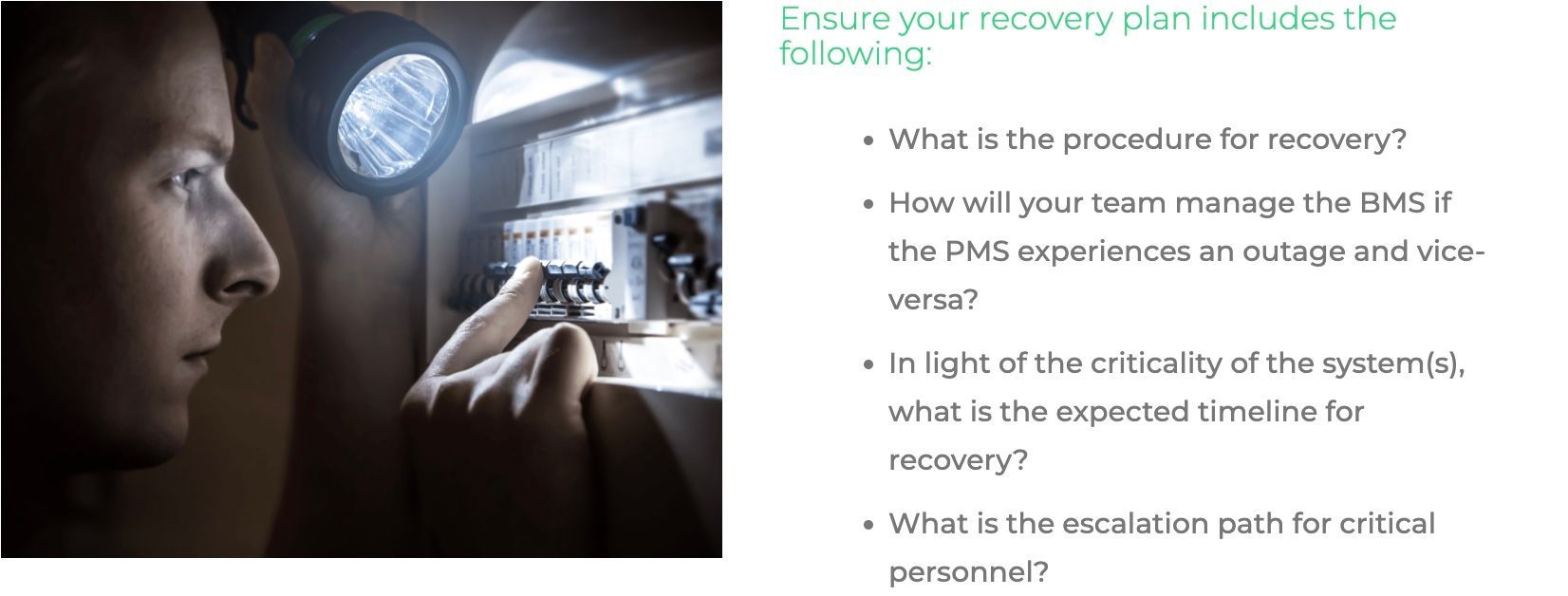BMS Systems | 10 Steps to Integration Success
BMS Systems | 10 Steps to Integration Success
Why integrate with BMS Systems?
Wallace D. Wattles said, “It is essential to have good tools, but it is also essential that the tools should be used in the right way.” Electricity rates are skyrocketing, and demand increases as our society sets out to recover from COVID. It’s more important than ever to ensure your power is reliable and efficient. Having the right tools to monitor your electrical system is a key factor in your success. Understanding tools such as Power Monitoring Systems (PMS) and Building Management Systems (BMS) is the first step. So, let’s break it down.
PMS and BMS play distinct roles within full-scale facilities. A Power Monitoring System monitors the electrical distribution grid, alerts to power quality problems, and logs power data/events up to the millisecond over time. Meanwhile, Building Management Systems monitor critical loads within facilities such as HVAC, lighting, fire systems, security systems, and even power systems (on a less granular level).

A BMS System can poll the same meters/equipment as PMS. However, a BMS performs this function slower and doesn’t collect data related to power quality. In most cases, you will want to avoid a two-master polling scenario, as the vast majority of devices are not capable of handling two masters simultaneously. In short, a two-master polling scenario is a sure-fire way of guaranteeing communication problems.
Therefore, it’s most efficient for the power monitoring system to poll the electrical distribution and metering systems. Then, it can pass the information to the building management system for a cleaner design. The power monitoring systems contractor must coordinate closely with the building systems management contractor to successfully complete this process.
APT has successfully implemented PMS to BMS integrations across the Western United States. So, we put together our list of 10 steps to Integration Success.
10 Steps to Integration Success
1. Understand and coordinate the network hardware
To integrate a BMS, you must first understand and coordinate your network hardware.
So here are some questions to consider:
- What are the physical means of moving data between the PMS and the BMS?
- Are the two systems isolated physically or logically?
- To allow the two systems to “talk,” what hardware do they require?
- Will the systems communicate via Ethernet cables or serially?
2. Understand and coordinate protocol
Another critical factor in ensuring successful integration is understanding and coordinating protocol. For instance, standard PMS systems typically communicate via MODBUS. Meanwhile, standard BMS systems typically communicate via BACnet.
So, remember to consider the following:
- Can the BMS system accept MODBUS communications from the PMS, or is converting MODBUS to BACnet required?
- What are the protocol parameters required to communicate effectively? (i.e., Baud rate, instance IDs, etc.)
3. Define your device list
Determine which devices currently communicating with the PMS need to report data to the BMS system.
Important information includes:
- How many are there?
- Does either system require additional licensing to communicate with the specific devices or quantity of devices?
4. Create a point list for each device type
Upon defining your device list, you must identify the points per device type. How will the points be pulled from the device-specific points map? Once you define the points list for device type, simple integration replication can occur each time the same “device type” is encountered on the device list.
5. Determine the frequency of communication
Defining the communication frequency up-front will help integrators create the appropriate logic for communication on both systems. In addition, it will help avoid costly system updates and or punch-list items at the end of the project.
Make sure to determine:
How often does the BMS need updated data per point type per device?
- Fifteen-minute intervals?
- 30-minute intervals?
- 1-hour?
6. Develop an integration test plan
Once the two systems successfully communicate, you need to create a test plan. A logical and exhaustive test plan provides confidence that the BMS system receives all planned data on the proper communication schedule. Integration test plans must ensure the test plan successfully logs each device and point in the BMS system.
7. Establish a monitoring plan
To monitor information, it’s only logical that you need to establish a plan to do so. However, in reality, this is not always the case. Therefore, setting up a clearly defined monitoring plan is crucial for successful integration.
Here are a few items to consider:
- How will the integration of the data points be monitored to ensure smooth data flow between the two systems?
- Are there any data points that are more vital than others that require separate monitoring timelines?
For example: How often should data be monitored?
- 15-minute intervals?
- 30-minute intervals?
- Or hourly?
8. Set up an Alert Plan
In the event of a data transfer interruption, how will your system generate alerts?
- Is it necessary to monitor the disconnect for an hour to see if it self-recovers?
- Do alerts need to be sent as soon as possible?
How will the system distribute alerts?
- Email?
- SMS?
Does it make sense to generate alerts from both the BMS and the PMS?
As a result of this extra step, the PMS can recognize more quickly when it loses connection to a vital device that sends information to the BMS.
9. Outline a maintenance plan
How often will you review and service your system? To answer this, you need to outline a maintenance plan. It will ensure that the systems maintain proper functionality in the event of changes to the physical system, software, or cybersecurity.
10. Formulate a recovery plan
But, what happens if all else fails and the systems stop communicating? Are you prepared for a complete outage on one or multiple systems? Unfortunately, our world today is one in which nothing is certain. Therefore we must prepare for every scenario that may arise.

APT 4 BMS Systems
APT specializes in fully-fledged power monitoring system design, implementation, and service. As part of design and execution, we also include planning and implementation for integration into BMS systems. In short, APT speaks your Information Technology team’s language. This language defines the server and software resources required for the power monitoring application. Above all, we help you focus on the information you need to run your business.
Still uncertain?
Contact an APT professional today and let us help find the best solution to fit your facility’s needs.
Ken Shaffer | APT Engineering Operations Manager

Contact









